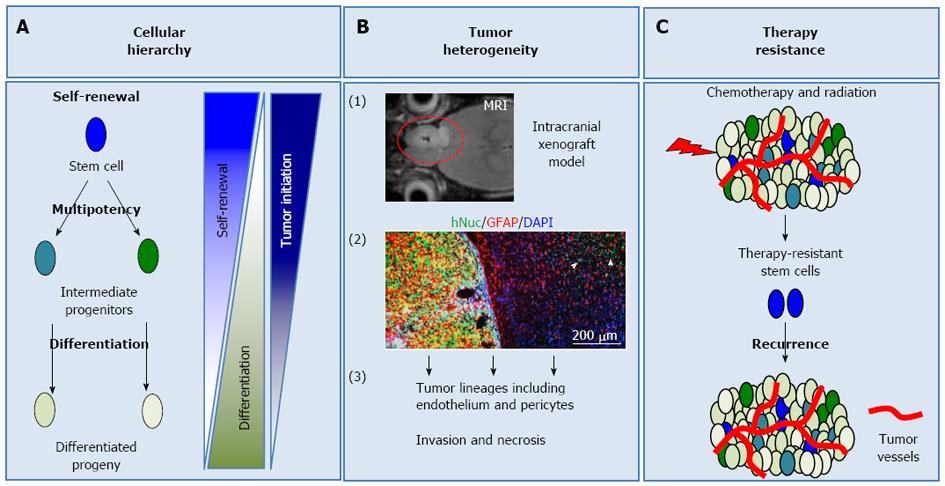Copyright
©2014 Baishideng Publishing Group Co.
World J Stem Cells. Apr 26, 2014; 6(2): 230-238
Published online Apr 26, 2014. doi: 10.4252/wjsc.v6.i2.230
Published online Apr 26, 2014. doi: 10.4252/wjsc.v6.i2.230
Figure 1 Biological significance of glioblastoma stem cells.
A: Glioblastoma stem cells (GSCs) have the ability to self-renew and differentiate into distinct lineages through different intermediate progenitors, a property termed multipotency. Co-existence of cells with different differentiation capacities defines the cellular hierarchy within the tumor; B: GSCs have the ability to initiate tumors more efficiently than differentiated cells. Tumor initation ability can be tested via intracranial xenograft models in immunodeficient animals. (1) These tumors can be imaged with Magnetic Resonance Imaging (MRI); (2) Microscopic analysis shows that xenografts maintain the histologic heterogeneity of the patient tumor, including the invasion of normal surrounding brain (arrowheads) (hNuc: human nuclear antigen marking human tumor cells in mouse brain, GFAP: Glial Fibrilary Acidic Protein, DAPI: nuclear counterstain); and (3) GSCs promote tumor heterogeneity by giving rise to distinct tumor lineages including tumor endothelium and pericytes, and maintain the phenotype of the parent tumor; C: GSCs are resistant to current therapeutic approaches causing relapse of the tumor.
- Citation: Bayin NS, Modrek AS, Placantonakis DG. Glioblastoma stem cells: Molecular characteristics and therapeutic implications. World J Stem Cells 2014; 6(2): 230-238
- URL: https://www.wjgnet.com/1948-0210/full/v6/i2/230.htm
- DOI: https://dx.doi.org/10.4252/wjsc.v6.i2.230









